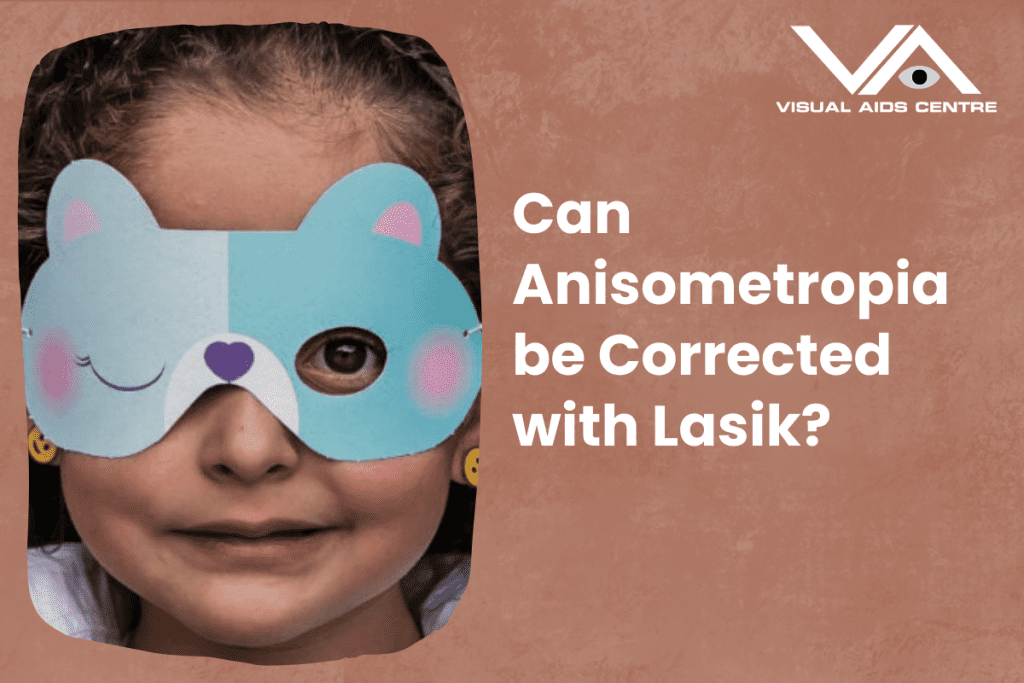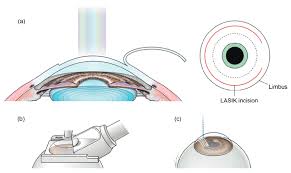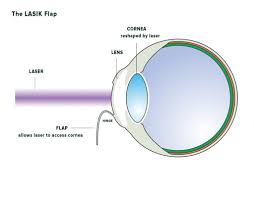Table of Contents
ToggleVision is one of the most vital senses, allowing us to experience the world in vivid detail. However, for those with anisometropia, the experience can be quite different. This condition, where each eye has a significantly different refractive power, can lead to various challenges, from headaches to difficulties in depth perception.
But there’s hope on the horizon – LASIK surgery may offer a solution.
In this comprehensive blog, we will explore whether anisometropia can be corrected with LASIK. We’ll cover what anisometropia is, how LASIK works, and examine the pros and cons of using LASIK as a treatment option. Our goal is to provide valuable information for adults, eye care professionals, and health enthusiasts.

What is Anisometropia?
Anisometropia is a condition characterized by a notable disparity in the refractive power between the two eyes. This imbalance can lead to one eye being more nearsighted or farsighted than the other. In certain instances, one eye may exhibit astigmatism while the other remains unaffected.
Symptoms of Anisometropia
- Headaches: Frequent headaches can occur due to the constant strain on the eyes as they try to focus.
- Double Vision: Also known as diplopia, this occurs when the brain receives two different images from each eye, causing confusion and double vision.
- Poor Depth Perception: Challenges in accurately assessing distances.
- Eye Strain: Continuous effort to focus can lead to eye fatigue.
- Amblyopia (Lazy Eye): In severe cases, the brain may start ignoring the image from the weaker eye, leading to amblyopia.
How Does LASIK Work?
Laser-assisted in Situ Keratomileusis, or LASIK, is a popular surgical procedure aimed at correcting refractive errors like myopia, hyperopia, and astigmatism. The process involves reshaping the cornea so that light entering the eye can be properly focused onto the retina, resulting in clearer vision.
Steps in a LASIK Procedure
- Preparation: The eye is numbed using anaesthetic drops.
- Flap Creation: A thin flap in the cornea is created using a microkeratome or a femtosecond laser.
- Reshaping the Cornea: An excimer laser is used to remove microscopic amounts of corneal tissue, reshaping it.
- Flap Repositioning: The corneal flap is laid back in place, covering the area where tissue was removed. It heals naturally without stitches.
Can LASIK Correct Anisometropia?
The short answer is yes, LASIK can correct anisometropia, but the suitability of the surgery depends on several factors:
Factors to Consider
- Severity of Anisometropia: Mild to moderate cases are more likely to be successfully treated with LASIK.
- Corneal Thickness: Sufficient corneal thickness is crucial for both creating the corneal flap and reshaping the cornea effectively.
- Overall Eye Health: Good overall eye health is crucial for the healing process and long-term outcomes.
Benefits of LASIK for Anisometropia
- Improved Vision: Significant reduction or complete elimination of refractive errors in both eyes, offering clearer and more balanced vision.
- Reduced Dependence on Glasses/Contacts: Many patients no longer need corrective lenses.
- Quick Recovery: Most people experience improved vision within 24 hours.
Challenges and Risks
- Overcorrection/Undercorrection: In some cases, the laser may remove too much or too little tissue, requiring additional procedures.
- Dry Eyes: A common side effect, though usually temporary.
- Visual Disturbances: Some patients report glare, halos, or double vision, especially in low-light conditions.
- Not Suitable for Everyone: Patients with certain medical conditions, like diabetes or autoimmune diseases, may not be suitable candidates.
Case Studies and Clinical Evidence
Several studies have explored the efficacy of LASIK in treating anisometropia. For example, a study published in the “Journal of Cataract and Refractive Surgery” found that LASIK effectively reduced anisometropia in a majority of the participants, improving their binocular vision and quality of life.
Another study in “Ophthalmology” concluded that LASIK is a viable option for treating anisometropia in patients with otherwise healthy eyes. The research emphasized the importance of thorough preoperative evaluations to ensure patient suitability and maximize outcomes.
Alternative Treatments
While LASIK is a promising option, it’s not the only solution available for anisometropia. Here are some alternatives:
Glasses
Specialized glasses with corrective lenses for each eye can help balance the refractive power. However, they can be cumbersome and may not offer perfect vision.
Contact Lenses
Contact lenses can provide a more natural vision correction compared to glasses. They are especially useful in cases where the difference in refractive power is significant.
Other Surgical Options
- Photorefractive Keratectomy (PRK): PRK, an alternative to LASIK, reshapes the cornea without the need for a flap.
- Implantable Collamer Lens (ICL): A lens is implanted inside the eye to correct vision. Suitable for patients with very high refractive errors or thin corneas.
Preoperative and Postoperative Care
Preoperative Care
Before undergoing LASIK, it’s crucial to have a thorough eye examination. This evaluation involves measuring corneal thickness, mapping the shape of the cornea, and assessing the overall health of the eyes. Patients should also discuss their medical history and any current medications with their surgeon.
Postoperative Care
Post-surgery, patients will need to follow a strict regimen to ensure proper healing:
- Use Prescribed Eye Drops: To prevent infection and alleviate inflammation.
- Avoid Rubbing Eyes: This can dislodge the corneal flap.
- Attend Follow-Up Appointments: Schedule regular check-ups to monitor the healing process and address any potential issues.
- Limit Screen Time: Reduce eye strain by limiting screen time, especially in the first few days.
To Sum Up
Anisometropia can indeed be corrected with LASIK, offering a significant improvement in vision and quality of life for many patients. However, it’s essential to consult with a qualified ophthalmologist to determine suitability and discuss potential risks and benefits. Thorough preoperative assessments and adherence to postoperative care instructions are crucial for successful outcomes.
If you’re considering LASIK for anisometropia or other refractive errors, don’t hesitate to book a consultation. Expert guidance is invaluable in making an informed decision and embarking on a path towards clearer, more balanced vision.













